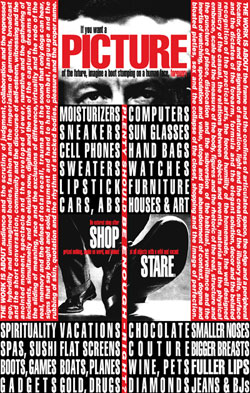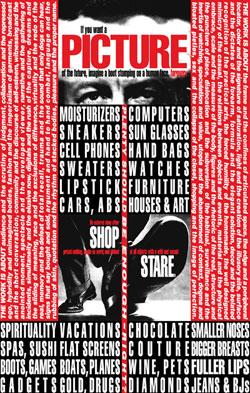One aspect of curatorial practice I find most interesting is collaboration. LACMA is no stranger to this concept, both in terms of the artists included in exhibitions and the way our permanent collection and special exhibitions are mounted. Recent examples include the performances of The Autoperforation Group, documented in Art of Two Germanys/Cold War Cultures, with photography and film along with the "relics" employed by the artist group during their performances in East Germany in the late 1980s; Franz West's posters, which line the walls of LACMA's most recently opened exhibition and appropriate motifs designed by his wife, artist Tamuna Sirbiladze; and the re-installation of the pre-Columbian collection, designed via a collaboration between artist Jorge Pardo and curator of the art of the ancient Americas, Virginia Fields.
If these concepts excite you as well, I recommend you keep an eye on the Contemporary Project, a multi-year initiative to create new dialogues and forms of collaboration between the academy and the contemporary art world. The director, Richard Meyer, professor of art history at the University of Southern California, has assembled curators, gallery directors, artists, and academics across Los Angeles to serve on the project's Advisory Committee. LACMA's own curator and department head of contemporary art, Lynn Zelevansky, is among the participants.

Barbara Kruger, Untitled (Shafted), 2008
This Saturday, March 28, the Contemporary Project is hosting "Contemporary Conversations," which will consist of two free public dialogues: one between LACMA Wallis Annenberg Director Michael Govan and artist Barbara Kruger (whose piece Untitled (Shafted) can be viewed during a ride in the BCAM elevator); the other between Lynne Cooke, curator at New York's Dia Art Foundation and chief curator at Museo Nacional Centro de Arte Reina Sofía in Madrid, and Douglas Crimp, professor of art history at the University of Rochester. One central theme of the conversations will be this idea of collaboration—collaboration between and among artists, critics, curators, and collectors—and also the more elusive ideas of collaboration between the present moment and the historical past, between the artwork and its audience, and between public and private forms of knowledge.
Megan Hawley, Curatorial Administrator, Modern Art



